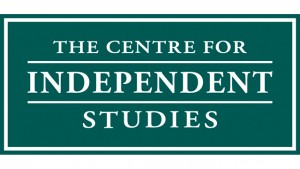Home » Commentary » Media Release » MEDIA RELEASE: New PISA reading, maths and science results confirm Australia’s educational decline
 “Two sets of independent international test results released in the past week show that Australia’s education system has serious deficiencies,” CIS senior research fellow, Dr Jennifer Buckingham said today.
“Two sets of independent international test results released in the past week show that Australia’s education system has serious deficiencies,” CIS senior research fellow, Dr Jennifer Buckingham said today.
“Last week, the results of TIMSS 2015 were released, showing no change in maths and science scores for Australian students since 1995 while other countries have improved, leading to a slide in our international rankings.
“This week’s PISA 2015 (Program for International Student Assessment) results are worse—the performance of Australian students in reading, maths and science has significantly decreased over the past 15 years.”
“Rankings are interesting but this is not the World Cup. The trend in Australia’s own performance over time is more important, and unfortunately the trend is very clearly downward.”
The decline in reading and maths scores is the equivalent of one year of learning, according to the reports from the Australian Council for Educational Research.
Key results for Australia:
Reading: Mean score has significantly decreased since 2000 (down 25 points)
61% of students achieved the National Proficient Standard
Maths: Mean score has significantly decreased since 2000 (down 30 points)
55% of students achieved the National Proficient Standard
Science: Mean score has significantly decreased since 2006 (down 17 points)
61% of students achieved the National Proficient Standard
“The deterioriation in Australia’s performance is because we now have more low performing students and fewer high performing students”, said Dr Buckingham.
“In reading, for example, the proportion of low performers grew from 12% in 2000 to 18% in 2015, while the proportion of high performers fell from 18% in 2000 to 11% in 2015. In maths, the proportion of high performers almost halved from 2003 to 2015, from 20% to 11%.
“Other countries, most notably the much-vaunted Finland, have also experienced significant declines, showing how cautious we must be about making simplistic country comparisons to guide policy. PISA data is very useful but it must be evaluated carefully,” Dr Buckingham said.
“One finding that stands out across many countries is that teacher-directed instruction is related to higher mean scores, while inquiry-based learning approaches are associated with lower mean scores.
“In Australia, inquiry-based approaches are favoured―this needs to be revised in the light of PISA and other evidence showing the greater effectiveness of teacher-directed, explicit instruction.”
COMPARING TIMSS & PISA
TIMSS and PISA are slightly different in nature and purpose: TIMSS assesses curriculum content knowledge while PISA assesses application of this knowledge to realistic problems.
| TIMSS
Released 29 Nov 2016 (8pm) (Trends in International Maths and Science Study) |
PISA
Released 6 Dec 2016 (9pm) (Program for International Student Assessment) |
|
| Year of assessment | 2015 | 2015 |
| Subjects | Maths & science | Reading, maths, science, problem-solving |
| Skills | Curriculum-based
Assesses knowledge and competencies |
Skills-based
Assesses application of knowledge to ‘real life’ situations |
| Age of students | Year 4 & Year 8 | 15 year olds |
| Started | 1995 | 2000 |
| Frequency | Every 4 years | Every 3 years |
| Number of countries | 47 in Year 4; 39 in Year 8 | 72 countries |
Dr Jennifer Buckingham is a senior research fellow at the Centre for Independent Studies and director of the FIVE from FIVE reading project. She is author of the report Keeping PISA in Perspective (2012).

MEDIA RELEASE: New PISA reading, maths and science results confirm Australia’s educational decline